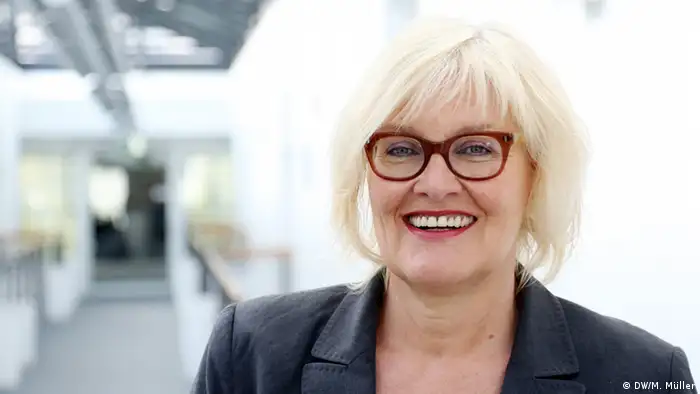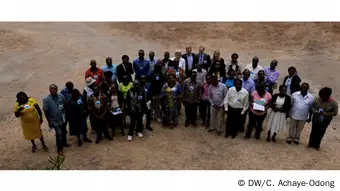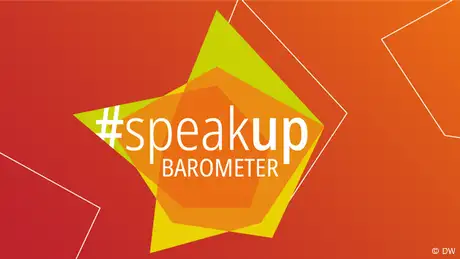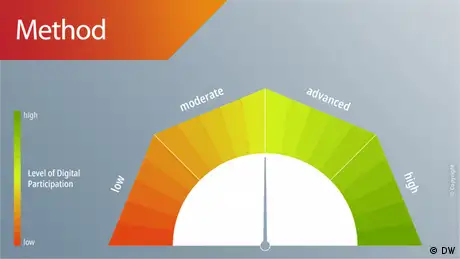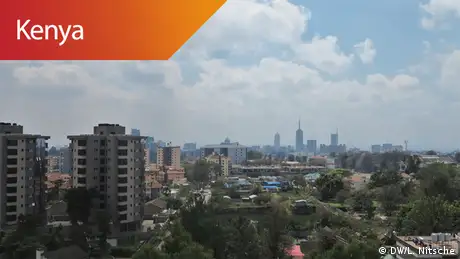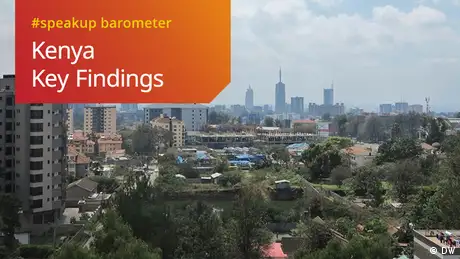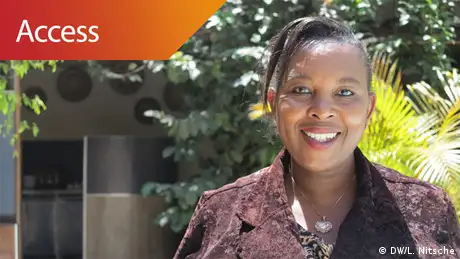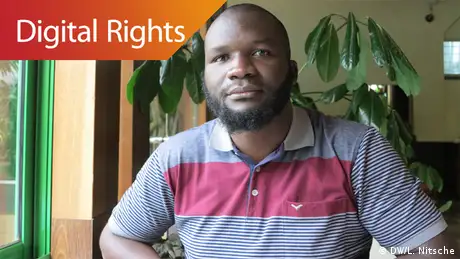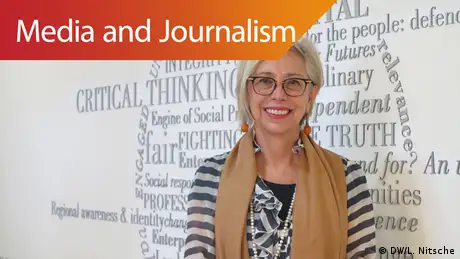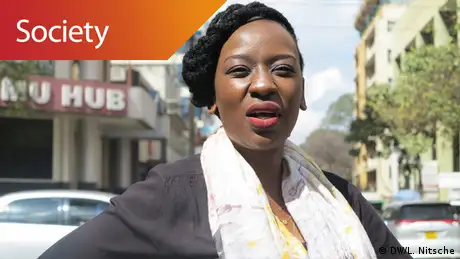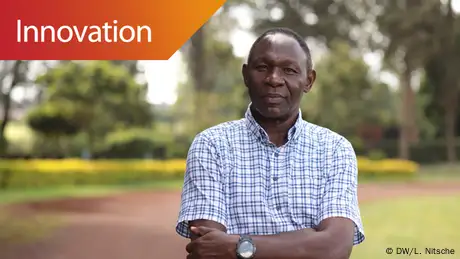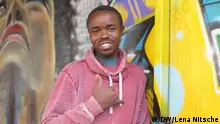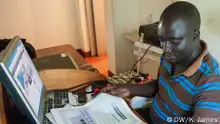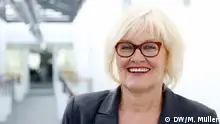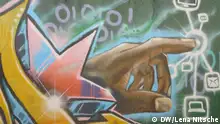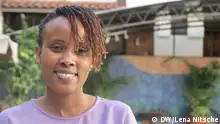#speakup barometer | Kenya
Digital disruptors creating positive change
Problems with rural Internet access and online hate speech prevail, but disruptive innovations have made Kenyan civil society enthusiastic for digital technologies, empowering them to speak up for their rights online.
DW Akademie’s Jutta vom Hofe is the Kenya country manager where she works closely with partner organizations to support sustainable journalism. In an interview with the #speakup barometer team, she shares her insights on digital participation in Kenya.
#speakup barometer: How would you evaluate the status of digital participation in Kenya?
Jutta vom Hofe: It depends on whom you ask. There is a stark contrast between rural and urban. Let me start with someone I would describe as a ‘digital native’ from Nairobi. This person is young, educated, has a computer, has a smartphone and uses WhatsApp, Twitter and Instagram. Maybe this person has a blog, or at least will follow some blogs. This person is informed about politics via social media or the traditional media. He or she also follows special interest blogs on topics such as fashion or music. This person also often meets and interacts with similar people in certain clubs or iHubs.
On the other hand, go to a rural area, perhaps on the shores of Lake Victoria and you are likely to find a very different story. There you meet an older woman with a keen interest in politics. Her husband is a fisherman and they don’t have the money to own a smartphone. But they have a feature phone. Unfortunately, they only have one device and the husband is the one who mainly has control of it and uses it the most. But from time to time when he is not around, she uses it and calls the radio station to share her opinion on whatever captures her attention.
The reality from one end of Kenya to the other can be extremely disparate. It is still fair to say that there is a digital gap. When I started working in here in 2014, this digital gap was much bigger, but it‘s getting smaller every day. If you look at middle class people and the people we work with in the media houses, you’ll see that accessing the Internet via a smartphone is now very common.
Where is the greatest potential?
The biggest potential is in the appetite for digital media, technology, and gadgets. Kenyans have embraced the mobile payment service M-Pesa. Everybody who has a mobile phone uses M-Pesa. They know it’s reliable, it’s practical, and it has changed their lives for the better. It’s what opened Kenyans to new technology and media. When it comes to the growth of Internet accessibility, Kenya is in fourth place worldwide. In terms of speeds, Kenya ranks 14th out of 130 countries.
Kenya has a strong civil society — something it’s long had. We’re seeing that now in the way people are advocating for Internet freedom. There was a big discussion before the 2017 elections about whether the Kenyan government would shut down the Internet during the election period. In the end, Kenyan civil society made a lot of noise, using the hashtag #Keepiton, which forced the government to make a statement before the elections promising not to interfere. The hashtag spilled over to traditional media.
What are the biggest obstacles?
Internet access in rural areas is one of the biggest obstacles. It’s the digital exclusion of people who either can’t afford it, or who live in areas that are not served by the infrastructure. There are large areas in Kenya without access to electricity. Internet in Kenya is really advanced in urban centers such as Nairobi, Kisumu in the west, or Mombasa on the coast.
Safety and security is also a big challenge. Activists, critics or journalists, especially those who report on corruption, face a lot of intimidation. A lot of them struggle with cyberbullying, especially women. Some of them have closed their Facebook accounts or even quit their jobs because the situation is so bad. At the extreme end you even have harassment or physical attacks.
What are some examples of innovative projects in the field of digital media?
In Kenya, there are well-known examples of digital innovations such as the mobile payment service M-Pesa, the online crisis mapping software Ushahidi and the iHub that made international headlines and really disrupted the technology and Internet scene in Kenya and beyond. But there are many more projects I find fascinating that aim to enhance digital participation. One I find interesting is Mzalendo, a parliamentary monitoring site. It’s a site where you can find a lot of facts about politicians, such as their agenda, their background, and even their participation in parliament. People take it very seriously because it allows anyone to follow what politicians promise and what they ultimately deliver.
#KOT is also interesting. It stands for Kenyans on Twitter, and it’s a Twitter handle that sparks a lot of discussion on Kenyan politics and society online. They have a huge reach. Often discussions start on Twitter before spreading into the wider society and reaching the traditional media.
What is the emphasis on DW Akademie’s work?
Innovations used to be mainly centered in Nairobi, but they’ve started moving to the counties. This is where DW Akademie is working, mainly to support media houses. Even though radio is still the number one medium, smartphone penetration is growing, and there is a growing demand to serve the rural population with local news via social media. We have run training and consultancy on how to improve use of social media — as an additional distribution channel but also as a source of revenue. Kenyans love Facebook, Twitter and WhatsApp. They establish new WhatsApp groups every other day in order to communicate among themselves or with the presenters of the radio stations. Of course, SMS is still an option for those who don’t own a smartphone.
During the 2017 election in Kenya, hate speech as well as misinformation and fake news on social media was a serious problem. DW Akademie provided a space for Kenyans to discuss these issues in a Facebook group providing information, articles, and arranging two Facebook live-events where experts shared their experience and knowledge about how to combat hate speech. More than 1000 Kenyans joined the group and followed the lively debate.
Moreover, we have trained local journalists working in rural areas in mobile journalism. So that they can then use their smartphones to transfer pictures, audio files or even videos from the remotest places. It allows them to expand their coverage from radio to online and even TV.
With good internet service available in the smaller cities, we’ve now been able to establish a four-month Blended Learning Program, which began in 2016 and is repeated annually. Our classes meet face-to-face and then continue collaborating and learning in between meetings by using our E-Learning software.This method allows more in-depth learning and also gives the participants a lot of flexibility.
The #speakup barometer is a DW Akademie project that examines the connection between digital participation, freedom of expression and access to information. Learn more at www.dw.com/barometer
DW recommends
- Date 18.01.2019
- Author Lena Nitsche
- Feedback: Send us your feedback.
- Print Print this page
- Permalink https://p.dw.com/p/3Baz0
- Date 18.01.2019
- Author Lena Nitsche
- Send us your feedback.
- Print Print this page
- Permalink https://p.dw.com/p/3Baz0

